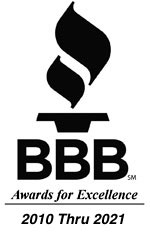Flood Waters – What Can You Do?
Often times in area wide flooding, there is an abundance of affected consumers and not enough water damage contractors or the roads are impassable and you are not able to get anyone to your property. Below are steps that you can take, as a property owner, while waiting for service.
- Open kitchen cabinets and bathroom vanity doors; remove all contents, leave doors open to allow air movement. Also remove drawers and stack them to dry
- If you are able, remove saturated porous materials (carpet and padding, furnishings, baseboards, cabinet toe kick, etc.)
- Open interior doors, especially closets and interior rooms, to allow air movement to reach all areas of the building
- Utilize the building’s HVAC system to assist in controlling the indoor environment and be sure to keep doors and windows closed when outside humidity is high
- Warm air will hold more moisture than cooler air, so avoid setting you’re A/C too low
Flood Waters – General Information
The National Flood Insurance Program (NFIP) or Standard Flood Insurance Program (SFIP) is not like regular State regulated insurance- this is a Federal Program. They will only issue one payment for the building and will not issue individual checks to contractors.
Facts about your flood policy
- Contents coverage must be purchased separately
- It is not a valued policy- flood insurance only pays up to the policy limit
- It is not a guaranteed replacement cost policy
If you do not have specific content coverage added to your flood policy, moving contents around to remove contaminated building materials and/or covering contents with plastic, is an out of pocket expense.
If you do not have flood insurance and your home/business is in an area that has been declared disaster area due to area wide flooding, you can receive Federal Aid, including outright grants. You can apply online at disasterassistance.gov or call 800-621-3362.
Read the NFIP Fact Sheet to ensure that you are getting the full benefit of the coverage that you have paid for and that you know your rights even after you have signed the Proof of Loss.
Category 3. Flood waters carry a variety of contaminants which is considered a Category 3 water loss.
This is the worst classification and is grossly unsanitary. It could cause severe illness or death if ingested. It used to be called black water, and sources include flooding from rivers or streams. We charge reasonable and customary charges for the removal of building materials infected with Category 3 water.






